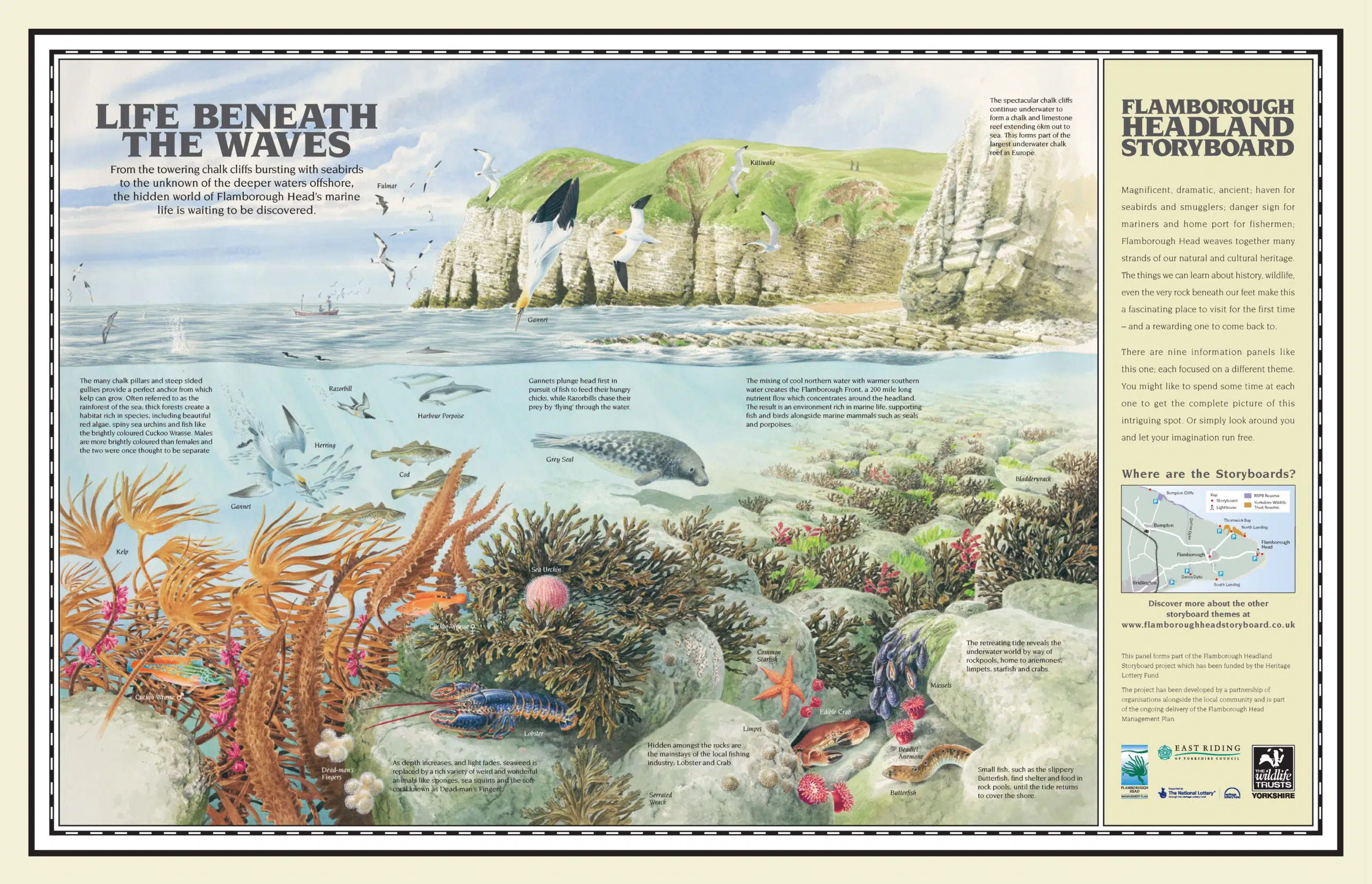Life Beneath the Waves
Chalk extends 6km offshore to form Europe’s largest chalk reef, while the erosive power of the sea has created over 200 submerged and semi-submerged sea caves.
Crevices in the rock provide habitat for crabs and lobsters, (the main stay of the local fishing community) while anemones, sponges, and hydroids carpet the seafloor. The kelp attaches itself by way of a holdfast, forming dense forests that support many other types of seaweed, alongside sea urchins, colourful anemones and other colourful marine invertebrates such as bryozoans and ascidians. The 200-mile long Flamborough front brings nutrient rich water to the headland, concentrating food for fish, seabirds, seals and cetaceans (whales, dolphins and porpoises).
The Life Beneath the Waves Storyboard, positioned near to the beach at South Landing, describes the colourful variety of wildlife that can be found beneath the waves. The waters around Flamborough Head are popular for recreational divers, though visibility can be hampered by sediment and strong currents mean that it should only be attempted by experienced divers.
Diving at Flamborough by Reg ThomsonBack to all Storyboards
Click here
